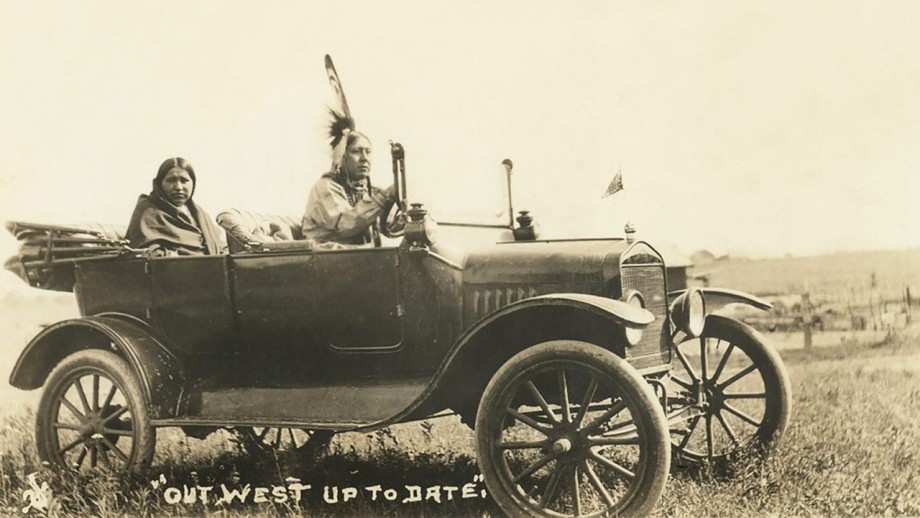UiS post-doctoral researcher Daniel Bowman writes about John Joseph Mathews’s 1934-novel Sundown, and the use of automobiles as signifiers of national identity.

Bowman, Daniel, “Nation of Mechanics: Automobility, Animality, and Indigeneity in John Joseph Mathews’s Sundown (1934)”, European Journal of American Studies, 19.1 (2024)
Daniel Bowman’s latest literary studies article was recently published in the European Journal of American Studies, as part of a Special Issue on Figurations of Interspecies Harmony in North American Literature and Culture, focusing on John Joseph Mathews’s 1934-novel Sundown, and drawing on Martin Scorsese’s 2023-film Killers of the Flower Moon.
In the early twentieth century, Bowman notes, American national identity became increasingly associated with automobility and the move from “a nation of horsemen to a nation of mechanics,” as automotive periodical Horseless Age described it. As well as advocating for the removal of horses from “civilized” society due to their anti-modern associations (a familiar colonialist solution), Horseless Age also encouraged nationalistic attachment to the automobile—the new hallmark of civilization.
Up to this point, the (colonial) history of the automobile in the United States had Indigenous Americans positioned not in the driving seat but in the background, as primitive people who made up part of the scenery. However, as Bowman’s latest study demonstrates, Osage writer John Joseph Mathews’s novel Sundown (1934) complicates this notion by presenting Indigenous ownership and operation of automobiles following the Osage Oil Boom.
Sundown follows the life of Osage American Challenge “Chal” Windzer, growing up in Osage County during the oil boom and struggling to balance his Indigenous roots with the desire to find routes into white settler culture. Drawing on a range of literary historical sources such as Horseless Age, Mathews’s ecological writing, and traditional stories of the Osage, Bowman’s reading of Sundown examines the inherent difficulties in separating the symbolism of the automobile from its material ecological consequences.
In much the same way that animal symbols are co-opted in automotive branding, Indigenous identities are exploited in car culture to conjure up a nostalgic past in which the ecological and colonial violence of American Modernity is conveniently forgotten. Bowman argues that Mathews’s Osage characters find themselves in a double-bind as they seek to refute stereotypes of technological primitivism whilst still maintaining and respecting Indigenous connections to the natural world.